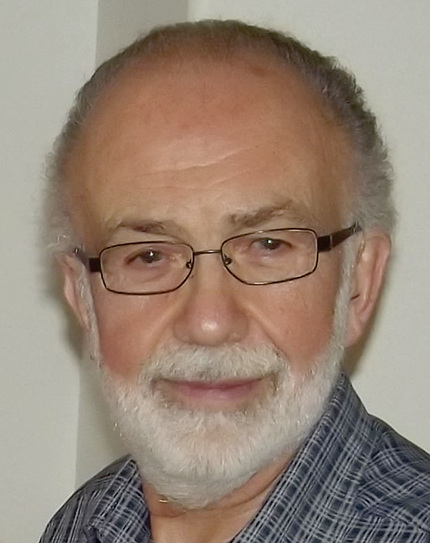Roger Wolfe Cohen
DOI: 10.1063/PT.3.3668
Roger Wolfe Cohen, a highly regarded physicist with major contributions to materials science and industrial management, died on 10 September 2016 in La Jolla, California, from complications from a brain tumor.

Roger Wolfe Cohen

Born on 12 December 1939 in Perth Amboy, New Jersey, Roger received his BS in physics from MIT in 1960. He went on to obtain an MS in 1962 and PhD in physics in 1966 from Rutgers University and completed the executive program at Harvard Business School.
Roger spent 16 years at RCA Laboratories in Princeton, New Jersey, where he successfully demonstrated the first germanium–silicon thermoelectric power generator. The technology subsequently powered a series of spacecraft sent to explore the outer solar system. They include Voyager 1 and Voyager 2, launched in 1977; Galileo, in 1989; Cassini, in 1997; and New Horizons, in 2006. The oldest power units in those spacecraft are approaching their 40th year of service. Roger also was a member of the team that developed the world’s first commercial 10 tesla superconducting magnet, a major breakthrough in the industrial application of superconductivity.
Collaborating with Curtis Carlson, Roger developed an information-theoretic description of the human visual system in 1978 and used it to design software that simulates the human ability to perceive differences in displayed images. That work led to many commercial pattern-recognition and image-quality applications, and it earned its makers several awards, including a special Emmy Award for improved high-definition television and in 2006 the Society for Information Display’s first Otto Schade Prize for outstanding scientific achievement in the advancement of functional performance and image quality of information displays.
In 1978 Roger moved to Exxon Corporate Research Laboratories, where he organized and built Exxon’s first research laboratory in theory and modeling. He became lab director and then senior director of Exxon corporate research in 1984, with responsibility for half of the corporation’s basic research activities.
In the late 1980s, Roger turned to technology development. He formed a group to develop and commercialize technology for retail marketing. His team demonstrated the world’s first retail vehicle-recognition and payment technology, which evolved into the current Speedpass system. After becoming manager of research planning and programs, Roger initiated and deployed new strategies for key technology assets in energy. They resulted in the development of new high-strength steels for gas pipelines, partnerships to advance fuel cells for transportation applications, novel technologies to find and produce hydrocarbon resources, and technologies for environmental bioremediation. He established the first-in-industry competitive technology program and developed and implemented program-planning systems for new science.
While at Exxon, Roger initiated the industry’s only basic-research effort on climate change. His team participated in worldwide scientific efforts to better understand climate, and team members were lead authors of key chapters in reports for the Intergovernmental Panel on Climate Change. Having more time to study details of climate science after he retired in 2003, Roger became increasingly more questioning about claims that additional carbon dioxide levels from human activities would be harmful. Part of the reason for his change of heart was that he found smaller observed warming than what had been predicted by most climate models. Another reason was the enhanced greening of Earth from more CO2. However, always open to cogent new arguments, he helped found the CO2 Coalition to study the matter further and served on its board.
Roger was a founding member of the American Physical Society’s Topical Group on the Physics of Climate, and his work there demonstrated his deep drive for getting at the truth. For example, Roger carefully considered and recruited knowledgeable speakers for the group’s initial forums. A source of tremendous integrity, Roger was an uncompromising believer in the core APS principle that “honesty must be regarded as the cornerstone of ethics in science.”
Roger’s integrity made a similar impression on his coworkers. His strongly expressed views in many areas were backed up by his critical analysis. Although those firmly held beliefs alienated many who disagreed with him, Roger would not let that prevent him from being open to new ways of thinking about an issue. A case in point is that despite his firm opinion that CO2 was not a problem, he helped establish Global Thermostat, a company that has developed technology to capture CO2 from the air and from flue gas. Its business model is to sell the CO2 profitably to make synthetic fuels, chemicals, plastics, and even carbon fiber.
Roger had approximately 50 publications and five US patents in the areas of materials, electronic devices, energy, the human visual system, and technology management. He served on Visiting Committees in the physics departments at the University of California, San Diego, and the University of Texas at Austin.
Roger spent most of his leisure hours with a yellow pad and pencil, working out physics equations. But he also managed to collect exotic cars, and he loved to drive them fast.
We will long remember his friendship, courage, and wise counsel.
More about the Authors
Peter Eisenberger. Columbia University, New York City.
Martin P. Fricke. San Diego, California.
Laurence I. Gould. University of Hartford, West Hartford, Connecticut.
William Happer. Princeton University, Princeton, New Jersey.
